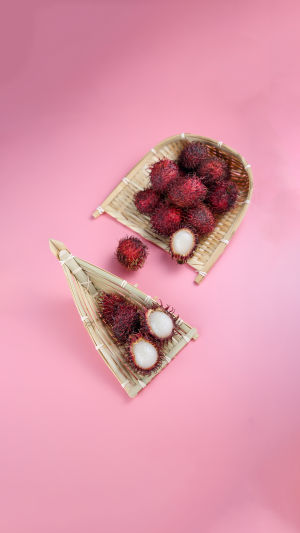Rambutan, also known as Nephelium lappaceum, is native to regions such as Malaysia and Indonesia and is a common fruit in tropical areas. It is extensively cultivated in Southeast Asian countries, including Thailand, Vietnam, the Philippines, and India.
Rambutan trees belong to the Moraceae family, which consists of evergreen trees that typically thrive in tropical and subtropical climates.
The cultivation of rambutan primarily involves seed propagation or grafting methods. It requires a warm and humid climate with moderate sunlight exposure. The trees generally thrive in soil that is rich in organic matter and requires regular watering and appropriate fertilization.
Rambutan trees typically start bearing fruit after a few years, and the harvest of the mature fruit is usually concentrated within a short season.
Due to its delightful taste and nutritional value, rambutan has been introduced to various tropical regions such as Brazil, Colombia, and Hawaii. In these locations, people have also begun cultivating rambutan and enjoying its unique flavor and texture.
The popularity of rambutan has made it a beloved fruit worldwide. Whether in Asia or other parts of the world, rambutans are cherished for their vibrant colors and delicious flesh.
The fruit exhibits a vivid appearance, with bright red or orange-red skin and a distinctive scaly texture on the surface. Its soft and juicy pulp, coupled with its sweet and tangy taste, makes rambutan a favorite among many individuals.
Here is a detailed introduction to rambutan:
1. Appearance: Rambutan fruits have smooth and brightly colored skin, typically in shades of bright red or orange-red. They are slightly oval or round, with variable sizes, usually about the size of a fist. The skin is characterized by a scaly texture, which gives the fruit its distinct appearance.
2. Pulp: When a rambutan is opened, one discovers light pink or orange pulp inside. The pulp is soft and juicy, with a delicate fibrous structure.
Its taste is luscious and often described as a blend between lotus mist and pomegranate. Rambutan offers a sweet and robust flavor, and certain varieties possess a subtle sourness, creating a memorable experience.
3. Nutritional Value: Rambutan is a low-calorie fruit choice, rich in vitamin C, vitamin A, and fiber. It also contains various antioxidants, such as flavonoids and polyphenols, which contribute to its health benefits. Furthermore, rambutan is a good source of minerals, including potassium, magnesium, and iron.
4. Ways of Consumption: Rambutan can be eaten directly by cutting it open and scooping out the pulp with a spoon.
Additionally, it is commonly used in the preparation of juices, jams, ice cream, salads, and more. Its unique texture and taste make it a popular addition to fruit salads, smoothies, and desserts.
5. Selection and Preservation: When selecting rambutan, it is advisable to choose fruits with a smooth surface and no visible damage.
Unripe rambutan can be ripened at room temperature for a few days, but it is best to store them in a cool and well-ventilated area to extend their freshness.
Ripe rambutans can be stored in the refrigerator but should be consumed within a few days to maintain their taste and freshness.
As a delicious and distinctive fruit, rambutan offers not only a delightful taste but also abundant nutrition. Whether consumed fresh or incorporated into various dishes, rambutan remains a popular choice among fruit enthusiasts.





